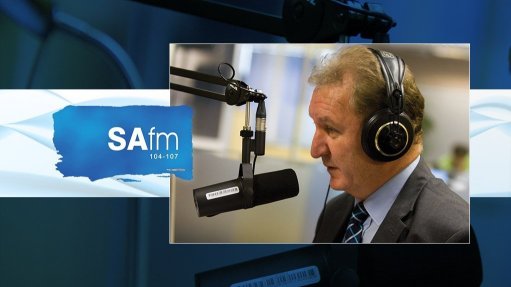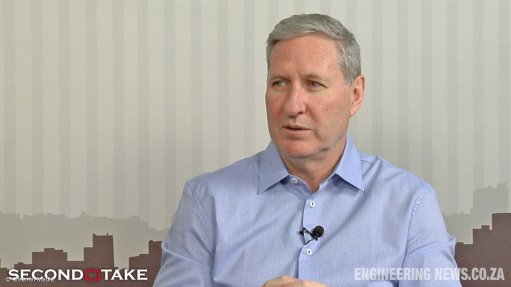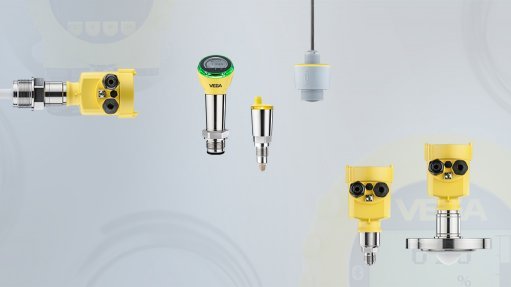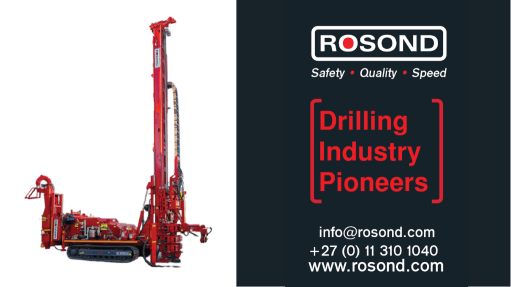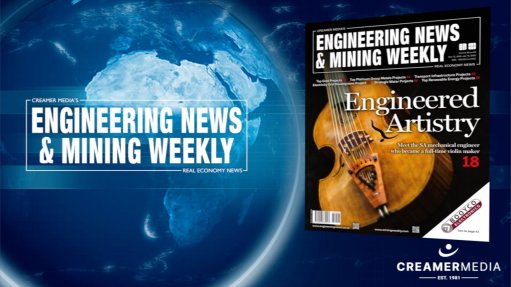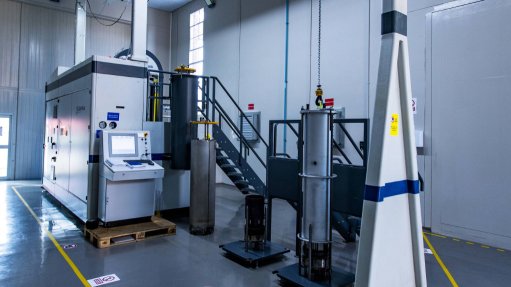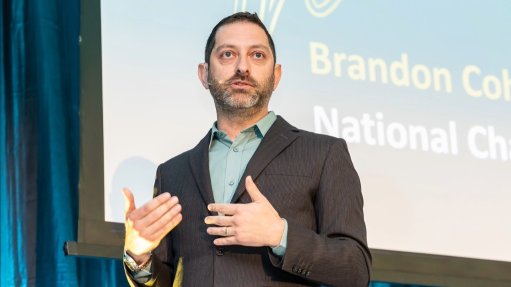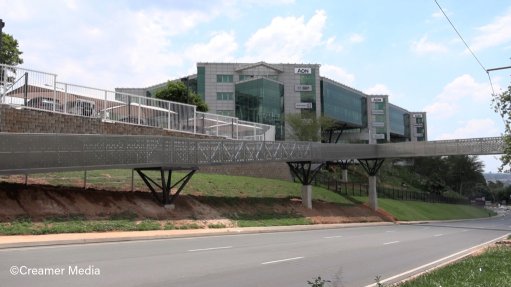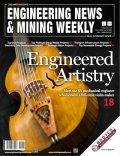URU reports positive results from AEM survey at Zeb, concludes fundraise
London-listed URU Metals has reported positive results from the independent interpretation of its high-power SpectremPlus airborne electromagnetic (AEM) survey over the Zeb nickel project, in Limpopo, South Africa.
The AEM dataset has been integrated with the project's gravity and magnetic models to refine the geological framework and rank conductive anomalies along the ultramafic intrusive trend.
The company notes that coherent conductive responses have been identified.
The interpretation delineates multiple discrete, laterally persistent conductors after screening for cultural and stratigraphic effects, with several features coincident with magnetic trends and intrusive margins which is consistent with the company's chonolith/feeder-style nickel sulphide model.
URU also notes that 3D integration strengthens the geological case, explaining that the combination of AEM, gravity and magnetics supports a focused corridor where sulphide accumulation is considered most plausible within or adjacent to the ultramafic package.
Moreover, a derisking pathway has been defined whereby the company is advancing a follow-up programme that will include ground-based electromagnetic methods, downhole electromagnetic and complementary techniques to refine geometry, depth and conductance prior to selecting locations for initial drill-testing.
The company notes that the interpretation of the recently completed Spectrem survey by Geofocus outlines several clear, late-time conductive zones that cluster along the edges of the ultramafic body, interpreted to be a chonolith, and near the magnetic and gravity shells.
URU says this spatial pattern is exactly what its chonolith/feeder model anticipates: nickel/copper/platinum group element (PGE) sulphides commonly accumulate in 'trap' sites along basal contacts and feeder embayments, often slightly offset from the densest and most magnetic core of the intrusion.
By integrating the electromagnetic with magnetics and gravity in 3D, the company says it narrowed targeting to a well-defined corridor where intrusion-related sulphide mineralisation is geologically plausible, while filtering out many responses more likely to reflect stratigraphy or surface effects.
URU explains that these results do not confirm mineralisation, but the alignment of independent datasets materially strengthens the technical case and provides a strong foundation for focused follow-up geophysics to refine geometry and prioritise drill-ready targets.
Zeb is centred on an ultramafic intrusive trend interpreted as a chonolith/feeder system, analogous in style to the Uitkomst Intrusion, which hosted a massive sulphide body of 2.3-million tonnes grading 2.69% nickel, 1.4% copper, and 6.39 g/t platinum, palladium, rhodium and gold.
Under this model, semi- to massive nickel/copper/PGE sulphides are expected to concentrate at, or near, intrusive contacts and feeder zones.
The integrated geophysical interpretation supports this conceptual framework and provides a robust basis for the planned fieldwork.
NEXT STEPS
To increase precision ahead of any drill selection, the company says it will conduct a ground-based geophysical survey over selected targets.
The work may include a combination of moving-loop and/or fixed-loop electromagnetic and limited complementary methods, where appropriate.
Ground-based surveys provide orientation-controlled, higher signal-to-noise measurements that enable constrained plate modelling of conductive bodies.
URU explains that this improves confidence in position, dip and strike, and helps discriminate compact, highly conducting sulphide targets from look-alikes such as banded iron formation, graphitic horizons, conductive weathering fronts or cultural coupling.
In practical terms, follow-up geophysics reduces false positives, sharpens drill vectors and lowers the probability of unnecessary metres, thereby improving capital efficiency and technical outcomes.
URU says the completion of the AEM survey combined with the ground-based geophysical work is a key step for the company in identifying the semi massive-massive sulphide discovery.
The company says it is working closely with the mining department in-country regarding the awarding of the mining rights and hopes to be in a position to update shareholders soon.
Upon successful awarding of the mining rights, the company notes that it intends on embarking on an extensive drill programme to further prove up the deposit.
URU says it is finalising the scope and sequencing of the follow-up programme, adding that the company will provide a further update once the programme selection, scheduling and access arrangements are complete.
FUNDRAISE
Meanwhile, the company has raised £500 000 before expenses through a placing of 17.89-million new ordinary shares of no nominal value each in the capital of the company at a price of 2.8p a share.
The placing was arranged by the company's broker Axis Capital Markets and will be used to fund the ground based geophysical survey.
URU says it is anticipated that the mining rights will be received in the near term. Part of the funding will be used to cover the administrative expenses associated with this process.
The successful acquisition of the AEM survey data marked a critical milestone, strengthening every technical aspect of the project and significantly enhancing its execution.
"We're encouraged that the Spectrem results further support our intrusion-hosted chonolith/feeder model at Zeb,” says URU exploration VP Richard Montjoie.
“The conductive zones cluster along intrusive margins and align with magnetic and gravity shells, which is consistent with where our model anticipates potential sulphide traps.
“Our next step is to apply targeted ground geophysics to refine geometry and conductance, reduce false positives, and position any initial drill holes with greater confidence,” says Montjoie.
Article Enquiry
Email Article
Save Article
Feedback
To advertise email advertising@creamermedia.co.za or click here
Comments
Announcements
What's On
Subscribe to improve your user experience...
Option 1 (equivalent of R125 a month):
Receive a weekly copy of Creamer Media's Engineering News & Mining Weekly magazine
(print copy for those in South Africa and e-magazine for those outside of South Africa)
Receive daily email newsletters
Access to full search results
Access archive of magazine back copies
Access to Projects in Progress
Access to ONE Research Report of your choice in PDF format
Option 2 (equivalent of R375 a month):
All benefits from Option 1
PLUS
Access to Creamer Media's Research Channel Africa for ALL Research Reports, in PDF format, on various industrial and mining sectors
including Electricity; Water; Energy Transition; Hydrogen; Roads, Rail and Ports; Coal; Gold; Platinum; Battery Metals; etc.
Already a subscriber?
Forgotten your password?
Receive weekly copy of Creamer Media's Engineering News & Mining Weekly magazine (print copy for those in South Africa and e-magazine for those outside of South Africa)
➕
Recieve daily email newsletters
➕
Access to full search results
➕
Access archive of magazine back copies
➕
Access to Projects in Progress
➕
Access to ONE Research Report of your choice in PDF format
RESEARCH CHANNEL AFRICA
R4500 (equivalent of R375 a month)
SUBSCRIBEAll benefits from Option 1
➕
Access to Creamer Media's Research Channel Africa for ALL Research Reports on various industrial and mining sectors, in PDF format, including on:
Electricity
➕
Water
➕
Energy Transition
➕
Hydrogen
➕
Roads, Rail and Ports
➕
Coal
➕
Gold
➕
Platinum
➕
Battery Metals
➕
etc.
Receive all benefits from Option 1 or Option 2 delivered to numerous people at your company
➕
Multiple User names and Passwords for simultaneous log-ins
➕
Intranet integration access to all in your organisation






